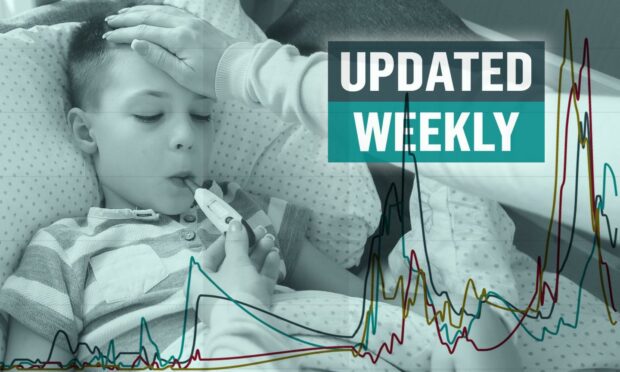The government is no longer going to report Covid related absence rates in Scottish schools.
That’s due to an overall easing of Covid guidelines which will put an end to self-isolation requirements and see fewer students staying home.
The government is also calling an end to reporting on how many staff members are absent because of Covid.
Earlier this week, it was announced that the daily Covid case reports, which have been published for the past two years, are being phased out and will be replaced by weekly reports in June.
The relaxation of Covid restrictions and the end of regular reporting has coincided with a drop in Covid related absences. Here are the final reports, and a look into why the government is changing its reporting scheme.
Why are the reports stopping?
A Scottish Government spokesperson said that the end of routine testing will make it harder to tell who is away from school because of Covid as opposed to any other reason.
Since Monday, students have been allowed to attend school even with mild Covid-like symptoms. Only severe symptoms such as fever should keep kids out of school, according to Professor Jason Leitch.
And even those who test positive for the virus are being told to “stay at home” but not required to self-isolate.
Last week, councils across the north and north-east reported their lowest Covid absence rates in 2022. For some, the most recent numbers are the lowest they have been since reports began in 2020.
As part of the change in Covid guidelines in communities and schools, the government is no longer tracking whether staff members are absent because of Covid.
According to the government website, a slowdown in the community testing and the end of self-isolation requirements means that it won’t be clear who has Covid and who is otherwise absent.
Covid school absence rates: What were the last reports?
Across the north and north-east, there were just 550 pupils at home in the past week because of Covid. Before schools broke for the Easter holidays, that number was almost 3,000.
Even earlier in January, it was closer to 7,000.
Of those absences, 332 were at home with a Covid related sickness. That’s a clear drop from the more than 1,600 reported before the holiday break.
Mainland absence rates hit all-time lows
All mainland councils in the north and north-east reported absence rates below 1% for the second week in a row.
Rates in Aberdeenshire (0.4%), Aberdeen City (0.4%) and Highland (0.4%) continue to decline steadily and all are even with the national average.
Moray reported rates of 0.7%
Island absences were on the decline
Orkney Islands Council (0.8%) is following the trend of the mainland councils.
The Western Isles reported a 1.9% Covid absence rate and Shetland came in at 1.5%.
Although they remain the only two regions that haven’t fallen back below the 1% line, both are well below recent highs of 13% and 12%.
More from the Schools and Family team
Are Aberdeen’s iconic flumes gone forever?
